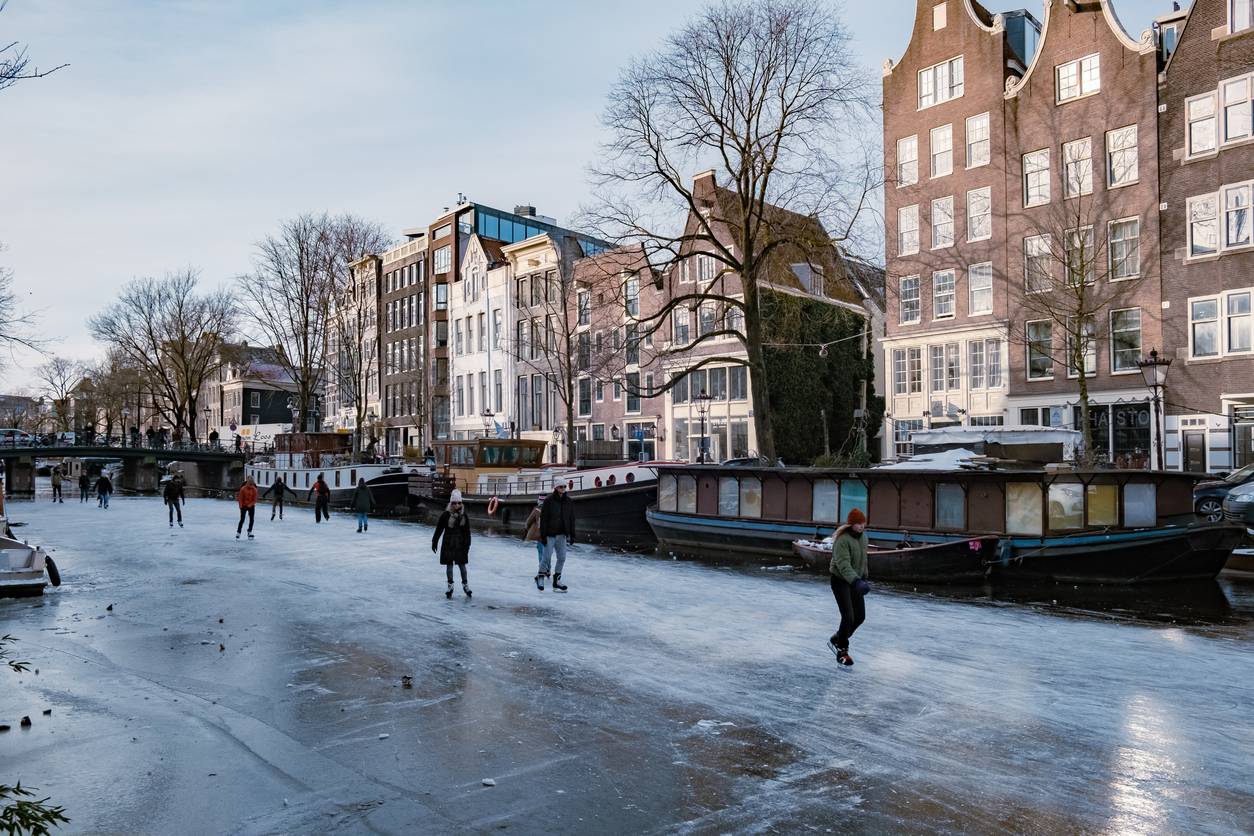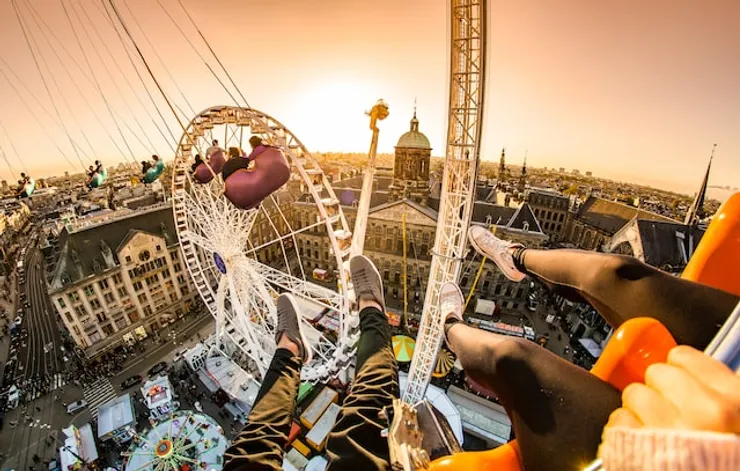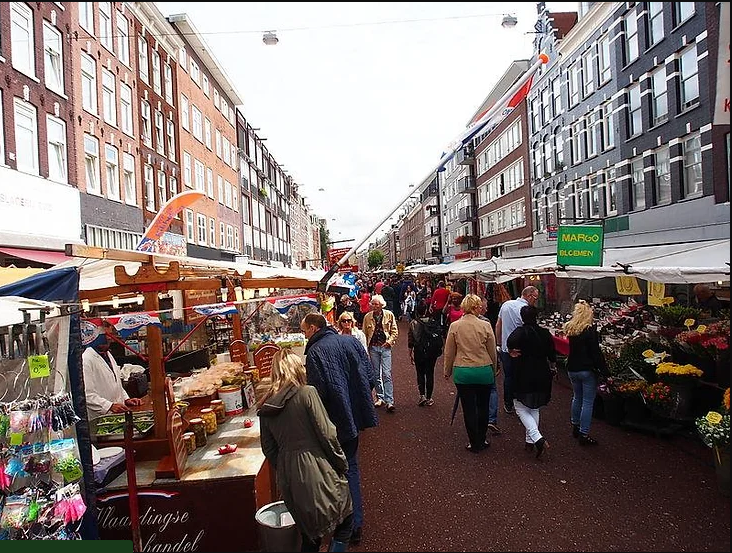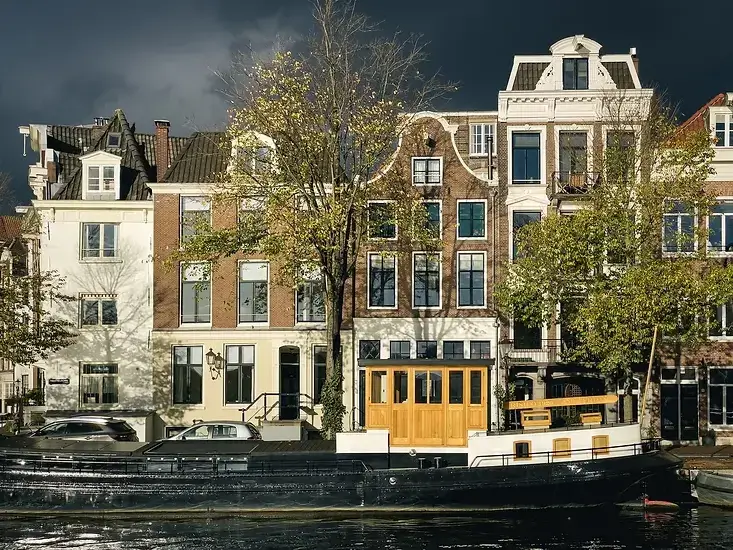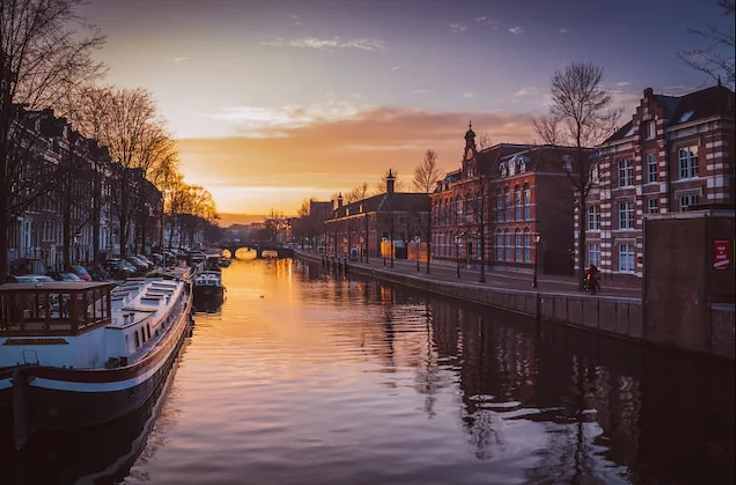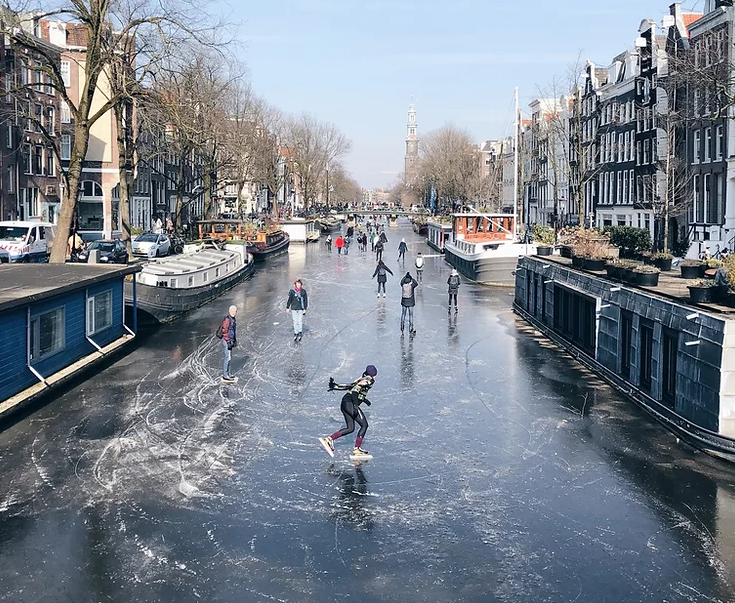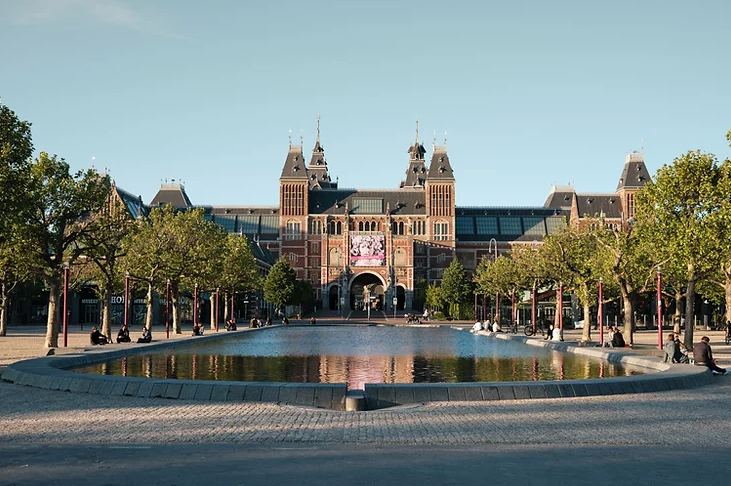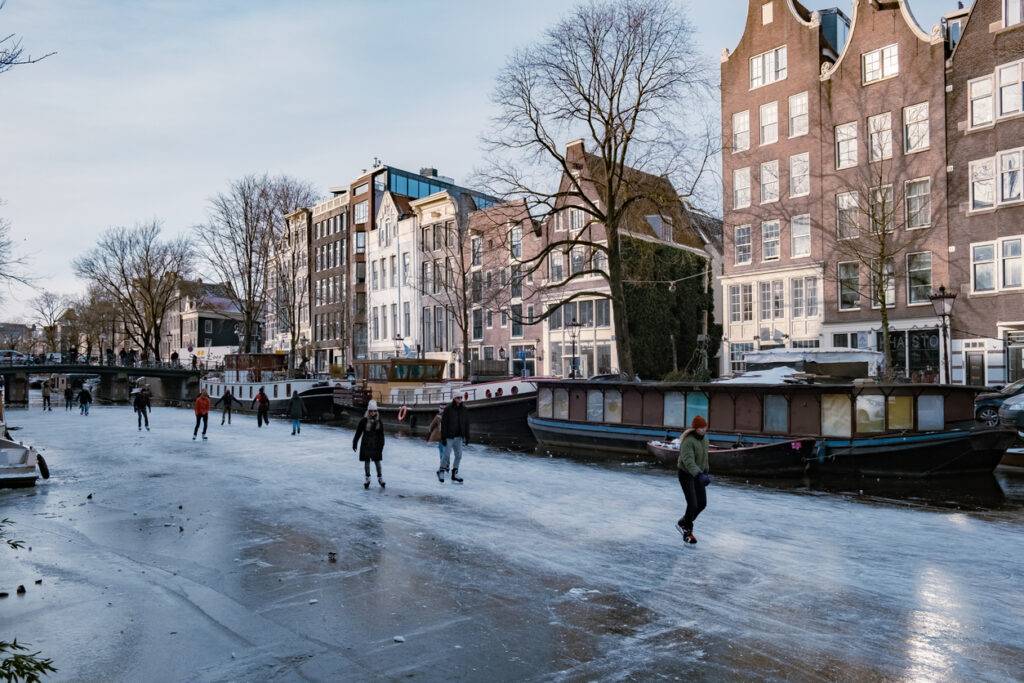
Winter brings about a magical transformation in the city of Amsterdam. As temperatures drop, the city’s famous canals, which are typically bustling with boats and tourists, start to freeze. This remarkable phenomenon doesn’t happen every year but when it does, it presents a unique spectacle and a delightful playground for locals and tourists alike. This article explores why and how often this freezing occurs, considers the impact of climate change, and shares the enjoyable activities that come with this icy transformation.
Why Do Canals Freeze?
The freezing of canals is dependent on weather conditions. When temperatures drop below freezing point for a long time, the water in the canals starts to freeze. But for the ice to get thick enough for things like ice-skating, the temperature needs to stay below -5°C for about a week or two. That makes the ice strong enough for people to walk or skate on safely.
How Often Do Canals Freeze?
The frequency of the canals freezing over has changed over the years. Before the mid-1980s, it used to happen almost every year . However, with the gradual rise in global temperatures, this frequency has reduced. In the past ten years, the Amsterdam canals have frozen over only three times, in 2012, 2018 and 2021.
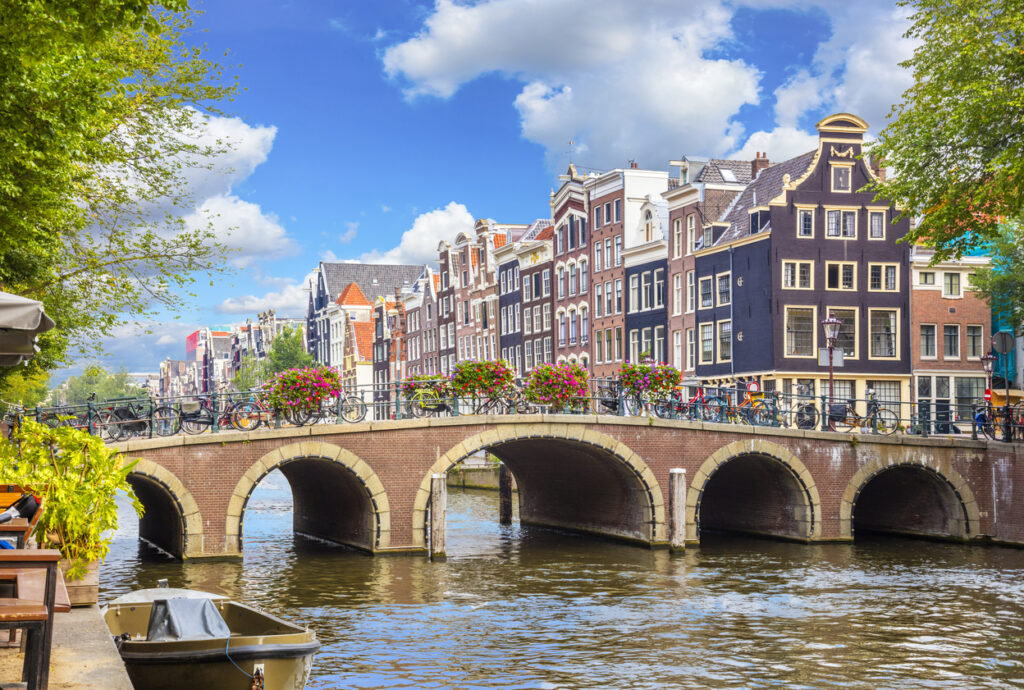
Impact of Climate Change on Canal Freezing
Climate change has greatly affected how often and how much the canals in Amsterdam freeze. Just like everywhere else, the Netherlands is getting warmer each year. You can see this warming trend in how the canals freeze.
Before the mid-1980s, the canals would freeze almost every year. But now, because of global warming, it doesn’t happen as much. They only freeze over about once every ten years. This change isn’t just in Amsterdam. It’s happening in other parts of the Netherlands too. And it’s affecting traditional winter events like the ‘Eleven City skating race‘ in Friesland province.
Skating on Frozen Canals: A Cherished Dutch Tradition
Despite the reduced frequency, the freezing of canals is always a cause for celebration in Amsterdam. The Dutch have a special relationship with ice, and as soon as the canals freeze, the excitement around ice-skating builds up.

Safety Measures and Preparations
Before people can go out on the ice, safety measures are taken. They close various locks and stop canal boats from going on certain canals so the ice can get thicker. The authorities keep a close eye on the ice. They only give the green light to go on the frozen canals when the ice is thick enough.
Activities on the Frozen Canals
Once the canals are declared safe for skating, the Dutch don’t hold back. From speed-skating competitions to dance parties, all sorts of activities are organized on the frozen canals. Residents and tourists, armed with their ice-skates, hit the ice, turning the city into a lively winter playground.
Conclusion
The freezing of Amsterdam’s canals is a rare and magical phenomenon. It highlights the city’s resilience and adaptability to nature’s surprises, and how it turns them into a joyous celebration. So, if you find yourself in Amsterdam during a freezing winter, don’t forget to tie up your skates and join the locals on the icy canals for a truly Dutch winter experience.
